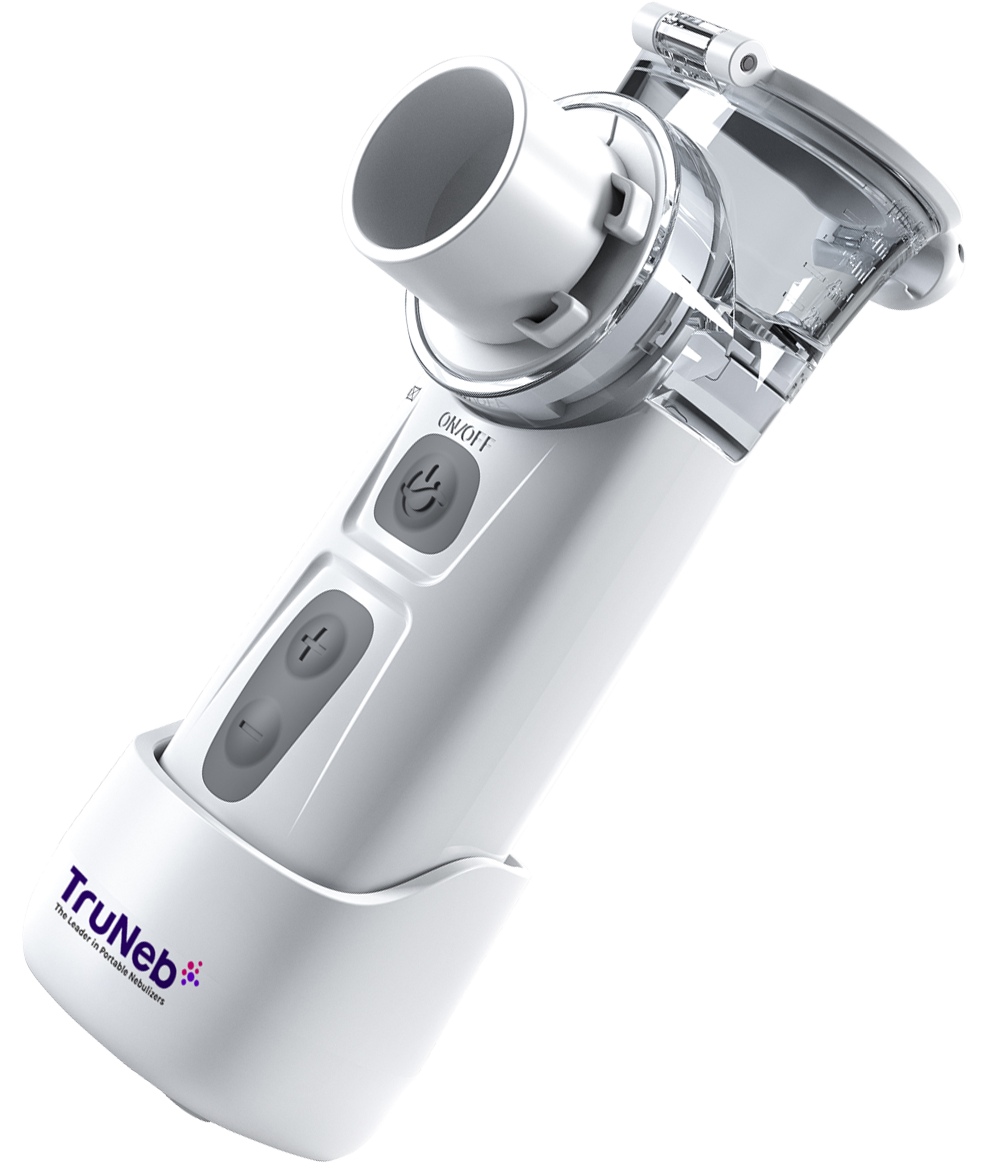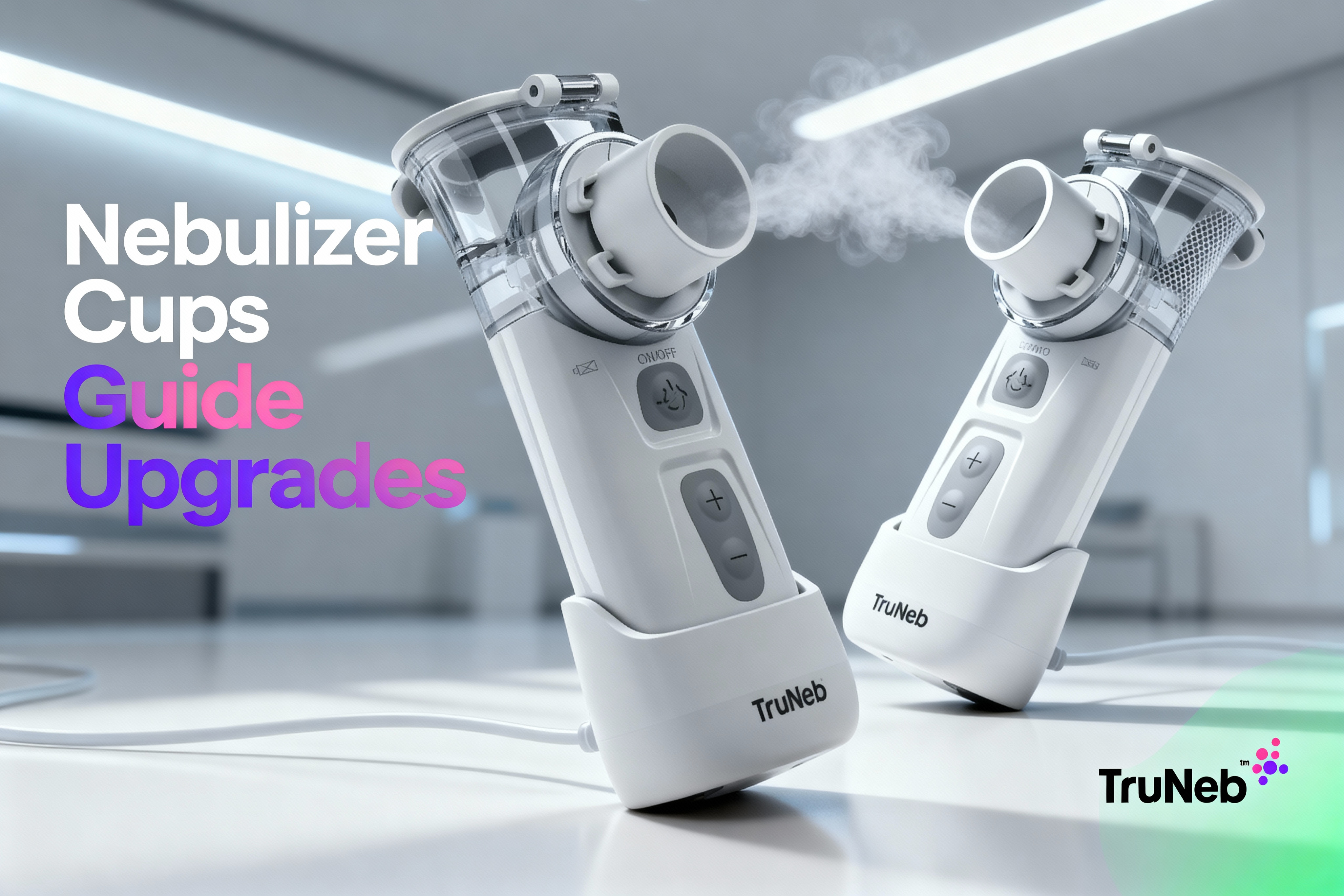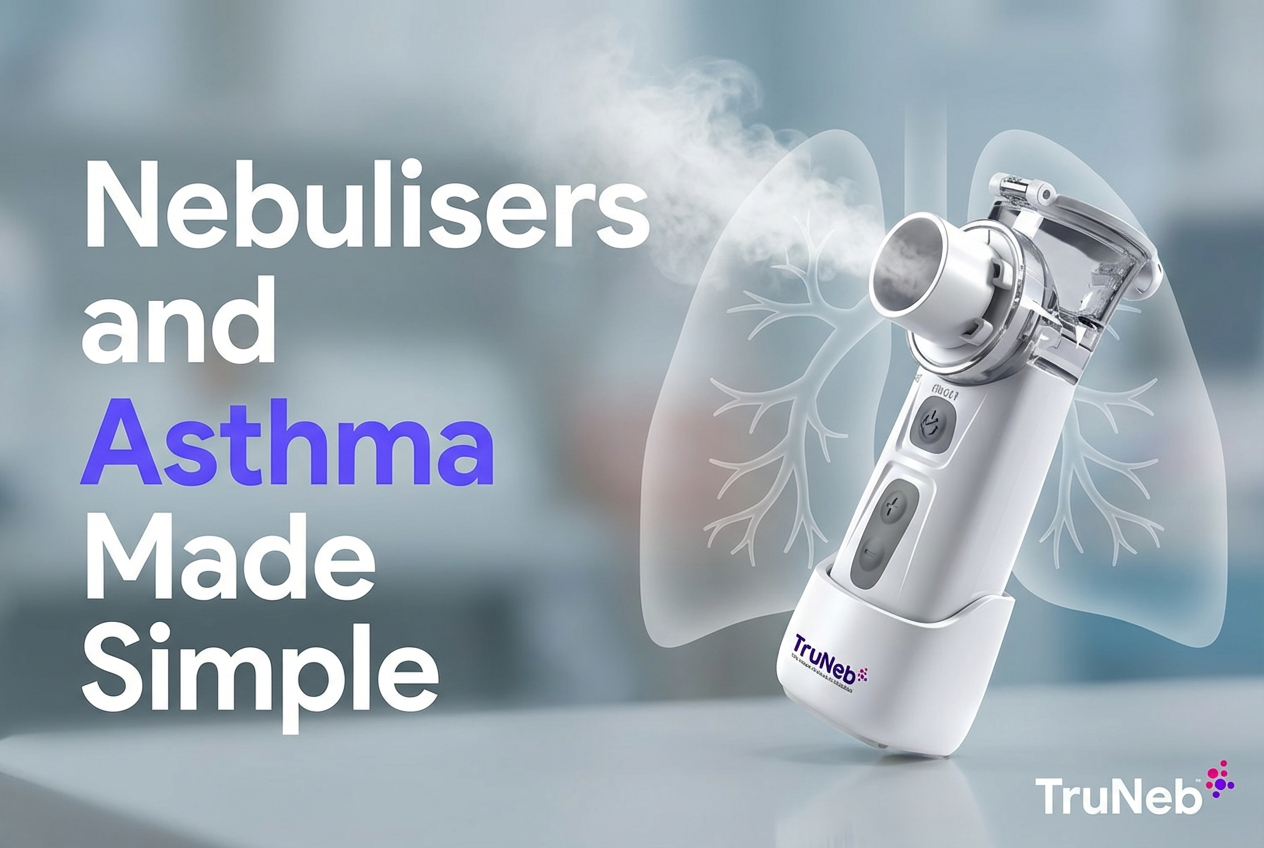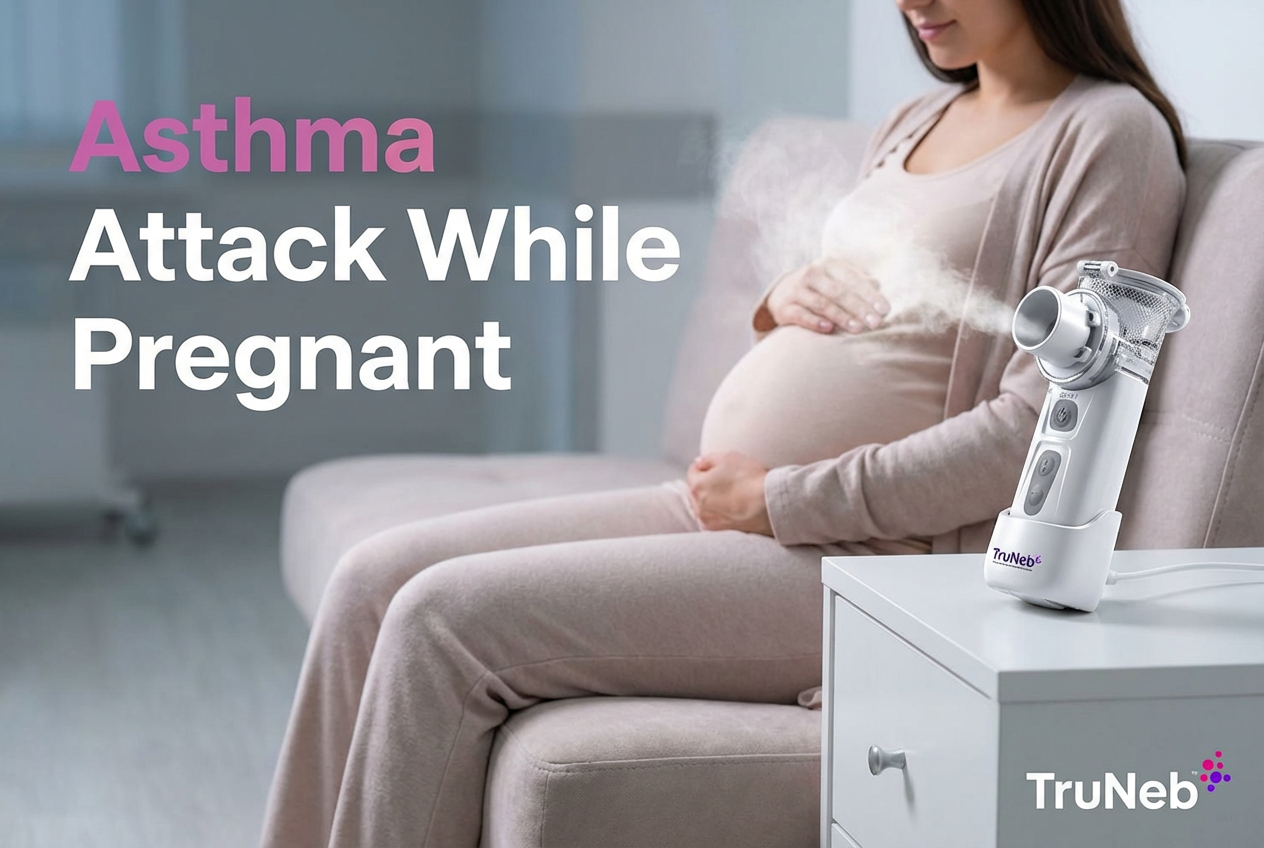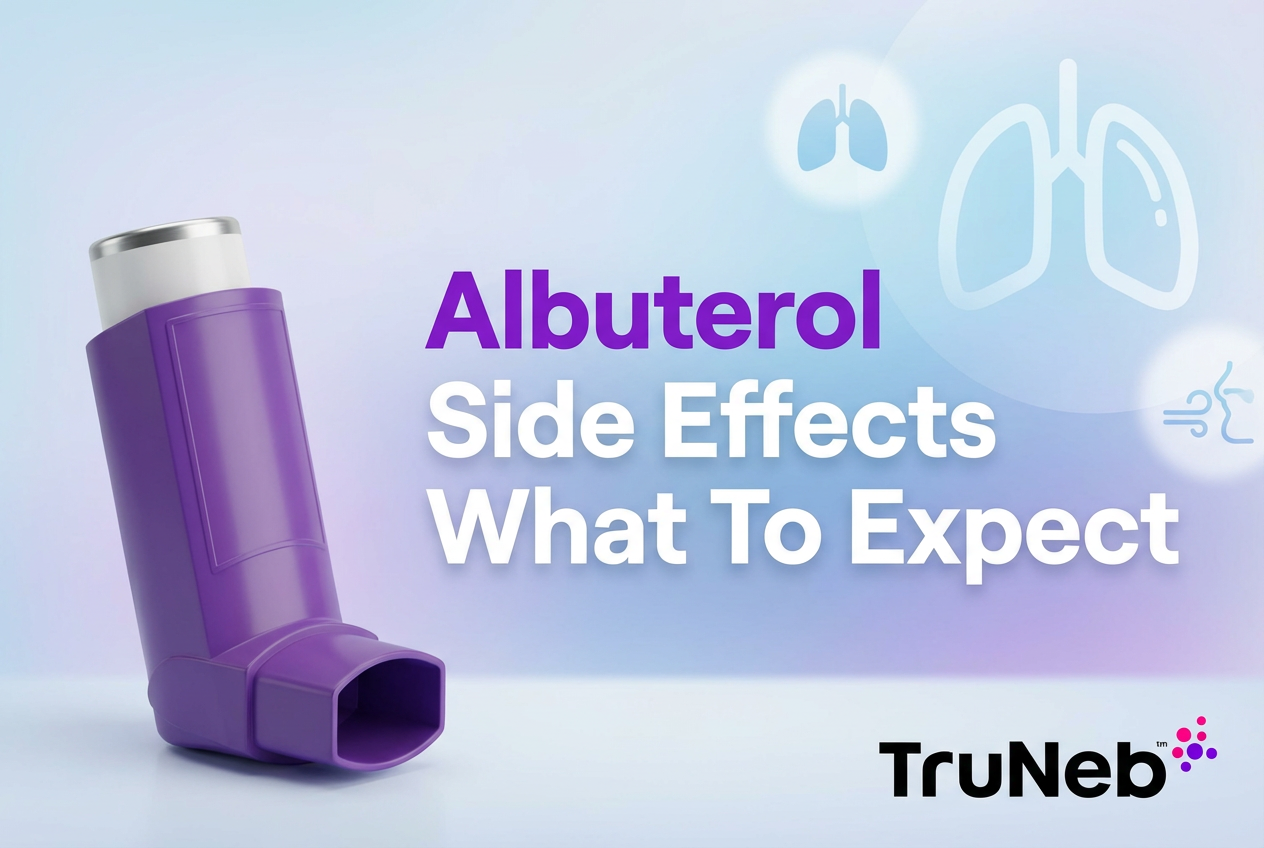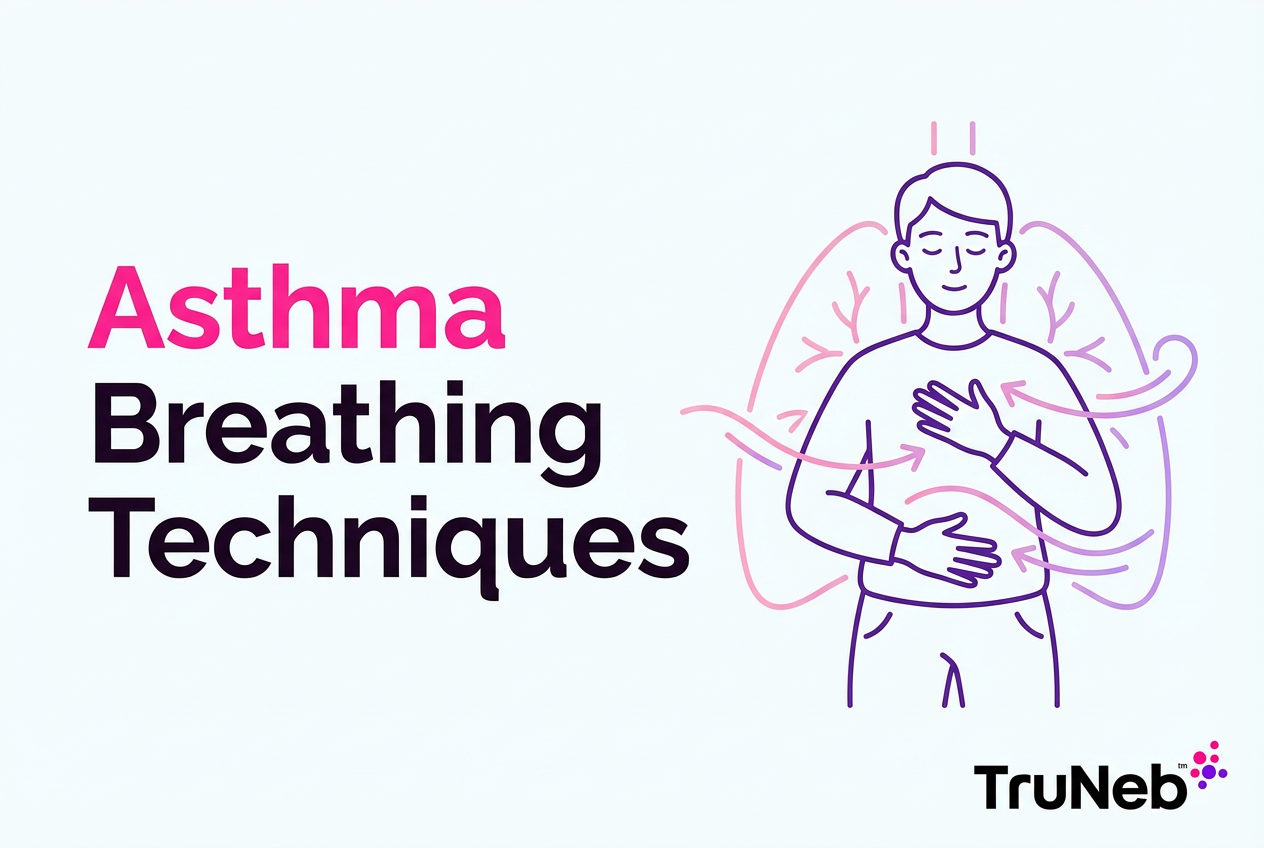On this page
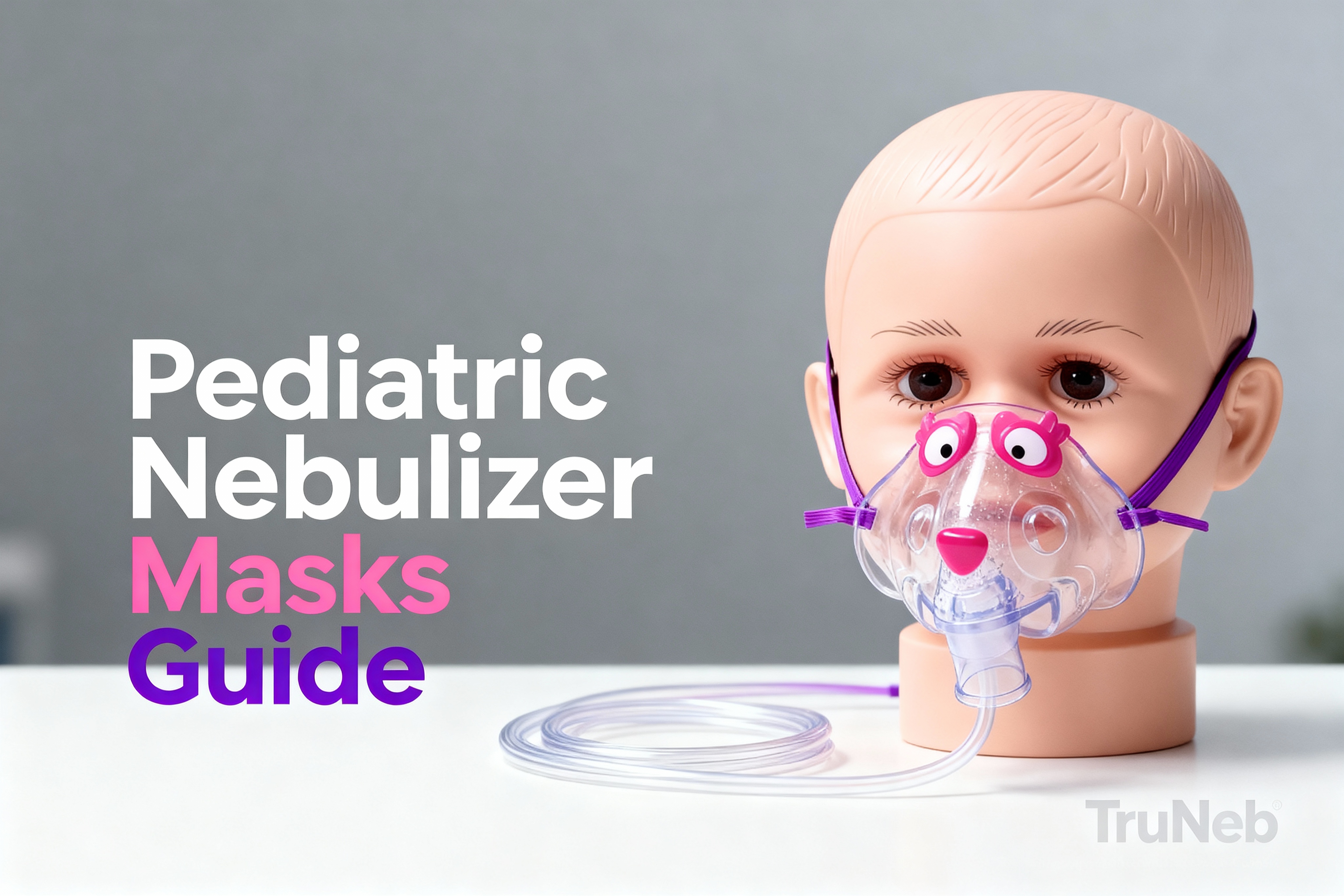
A pediatric nebulizer mask is a small face mask that connects to a nebulizer so your child can breathe medicated mist for conditions like asthma, bronchiolitis, croup, or cystic fibrosis (CF). Choosing the right nebulizer mask for kids helps more medication reach the lungs. Nebulizers are typically used when a child can’t coordinate an inhaler; spacers attach to inhalers, not nebulizers.
What a Pediatric Nebulizer Mask Does
A pediatric nebulizer mask is a soft mask that covers your child’s nose and mouth. It connects to a nebulizer cup and tubing. The nebulizer turns liquid medicine into a fine mist your child can breathe in normally. This setup is commonly used for asthma, wheezing, bronchiolitis, croup, or CF when kids can’t use inhalers well. Nebulizers are typically used for young children who can’t coordinate inhalers; spacers attach to inhalers, not nebulizers.
Key point: young children don’t need special breathing techniques with a mask. They just sit, breathe, and the mist does the work.
One-liner: A good seal means more medicine in little lungs, less lost to the air.
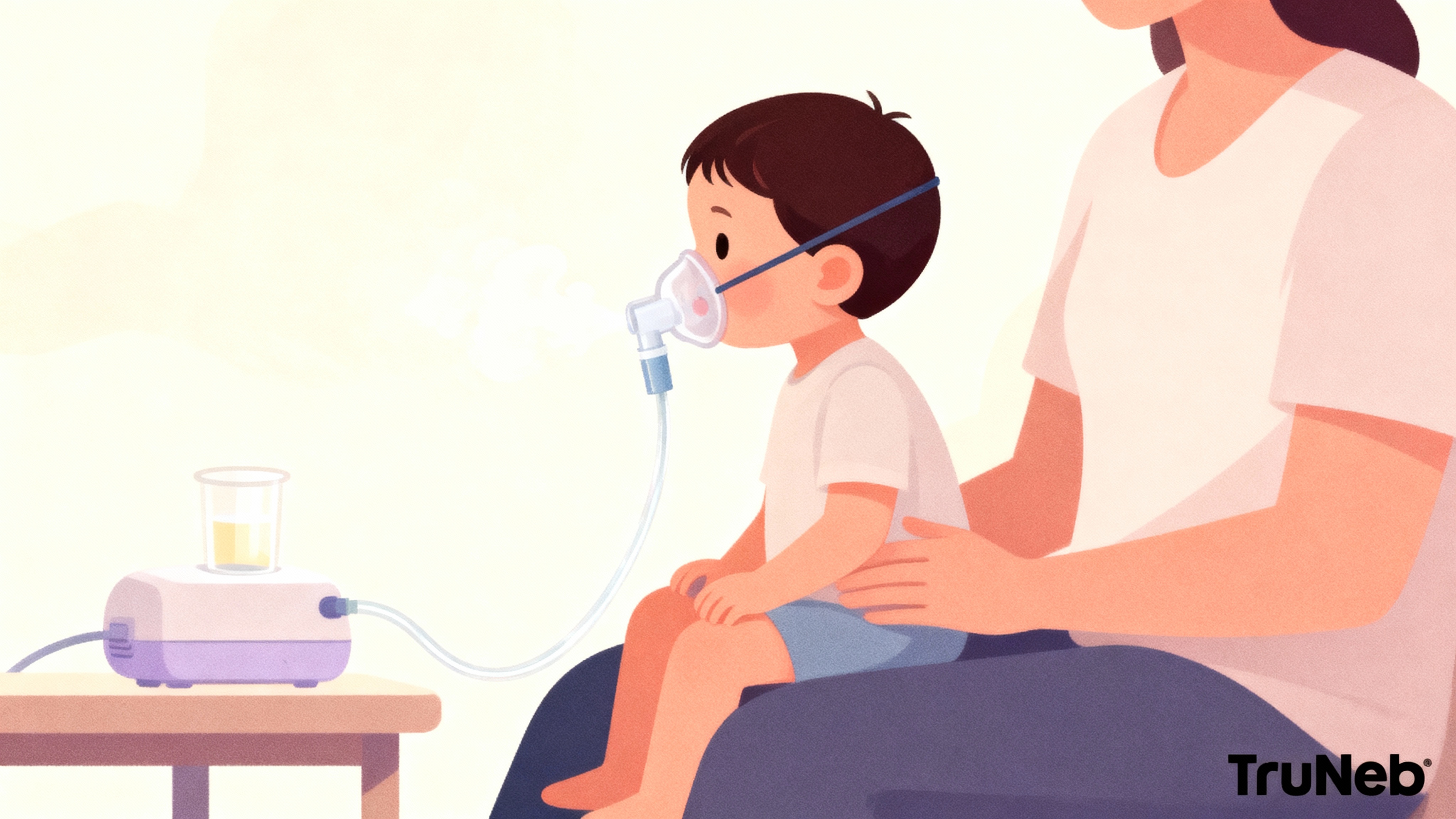
Mask vs Mouthpiece — Which Should Your Child Use?
Both deliver the same medication. The right choice depends on your child’s age and how well they can follow simple directions. When comparing a pediatric nebulizer mouthpiece vs mask, think about fit and cooperation.
- Use a mask if your child is an infant, toddler, or can’t keep a tight lip seal. They can breathe normally and still get the dose.
- Try a mouthpiece around 4–6 years old when your child can seal their lips and breathe through their mouth on cue. When used correctly, a mouthpiece can deliver more medication deeper into the lungs.
Think nebulizer mask vs inhaler for a child this way: inhalers work best with a spacer when a child can coordinate; nebulizers help when they can’t. For nebulizer mask vs spacer, remember a spacer pairs with an inhaler, while a mask pairs with a nebulizer. If your child can’t reliably use a nebulizer mouthpiece for a child, a well-fitted mask delivers more medication than a poorly used mouthpiece. Avoid “blow-by” (holding the mask near the face) unless your doctor advised it — it delivers significantly less medicine.
One-liner: For kids under about 5, a well-fitted mask is the most reliable option; older kids who can seal their lips and follow directions can use a mouthpiece.
Tip: A TruNeb™ portable mesh nebulizer includes both a mask and a mouthpiece, so you can switch as your child grows.
Choosing the Right Mask Size
A child nebulizer mask that fits “just right” matters. The mask should cover the nose and mouth with minimal gaps so mist doesn’t leak out.
Infant Masks (under ~18 months)
Very small, soft masks that you can hold it gently on your baby’s face. Babies are nose-breathers, so full nose-and-mouth coverage helps. Look for an infant nebulizer mask labeled for babies; a baby nebulizer mask that seals well is key.
Toddler/Young Child Masks (~18 months to ~5 years)
Standard pediatric masks. A toddler nebulizer mask or child nebulizer mask with a soft edge and a snug seal around the nose and chin can improve cooperation. Fun designs can help.
Older Children (≈5–10 years)
If the pediatric mask looks too small or leaks, try a larger child mask or a small adult mask. Fit matters more than age.
Fit tip: Pinch the adjustable nose clip (if present) to improve the seal.
One-liner: If you see mist escaping around the edges, try a different size and recheck the seal.
| Mask size | Approx. age | Fit notes |
|---|---|---|
| Infant | 0–18 months | Very small; hold gently for a full seal over nose and mouth. |
| Toddler/Child (small) | ~18 months–5 years | Standard pediatric size; soft edge, covers nose and chin. |
| Child (large) / Small adult | ~5–10 years | Move up if smaller mask leaks or leaves gaps. |
| Adult | ~10+ years | Use when it seals better than pediatric sizes. |
Note: Age ranges are approximate—use the best seal as your guide.
How to Do a Nebulizer Treatment (Step-by-Step)
- Wash your hands and gather supplies. Have the nebulizer, medication vial, clean cup, mask, and tubing ready.
- Measure the medication. Use the dose your doctor prescribed and place it in the nebulizer cup.
- Assemble the parts. Connect cup to mask and tubing, then tubing to the machine. For a portable mesh nebulizer like TruNeb, attach the mask and fill the chamber as directed.
- Position your child. Sit them upright on your lap, a chair, or in a high chair.
- Fit the mask. Place it over the nose and mouth. Adjust for a snug seal. Turn the device on. You should see a light mist.
- Breathe normally. Keep your child calm with a book or show. Treatment typically takes 5–10 minutes.
- Finish and turn off. When the mist slows or the cup sputters, you’re done.
- Wipe face (if using a steroid). Wash or wipe the face after steroid meds.
- Clean the parts. Wash the mask and cup right after use so they’re ready next time.
One-liner: Set up the device, fit the mask snugly, let your child breathe normally for 5–10 minutes, then clean the parts.
⚠️ Get urgent help if your child has severe trouble breathing, blue or gray lips/face, ribs pulling in with each breath, is unusually sleepy, or you’re worried about their safety — call emergency services.
Tips to Help Your Child Cooperate
- Make it routine: Same place, same time. Predictability lowers stress.
- Give it a fun name: “Hero mask” or “space mask” makes it feel like play.
- Practice on a toy: Let your child “neb” a stuffed animal first.
- Distract: Read a book, sing, or play a calm video during the treatment.
- Let them help: Older toddlers can help hold the mask or press the start button.
- Use kid-friendly gear: Quiet devices and playful masks can ease fear. A portable nebulizer like TruNeb is very quiet.
- Try during sleep (infants): Some babies tolerate it better while napping — keep your baby upright enough and monitor closely.
- Praise and small rewards: Stickers or a chart can build good habits.
One-liner: Make treatments predictable and calm — a simple routine, distractions, and praise go a long way.
Cleaning and Maintenance
Keeping parts clean helps prevent germs and keeps treatments effective.
After each use
- Take apart the mask and cup. Wash them with warm, soapy water.
- Rinse well and air-dry completely. Don’t wash the inside of the tubing; replace it on schedule instead.
Weekly disinfection
- After washing, soak mask and cup in 1 part white vinegar to 3 parts hot water for 20 minutes. Rinse and air-dry. Only boil or use a dishwasher if your manual says it’s safe.
Replacement schedule
- Reusable masks and tubing: about every 6 months, sooner if cracked, stiff, or discolored — replace sooner after an infectious illness if advised by your doctor.
- Disposable masks: toss after roughly a week of use.
- Filters (if your machine has them): check monthly and replace as directed.
Reusable pediatric nebulizer masks can be used for months with proper cleaning; disposable masks are designed for short-term use and shouldn’t be re-used beyond the label.
One-liner: Clean after every session; replace worn parts so your child gets a steady, safe mist.
Compatibility and Helpful Accessories
- Most pediatric nebulizer mask and tubing kits use standard connectors, so pediatric mask kits usually fit common compressor nebulizers.
- Portable mesh nebulizers like TruNeb don’t use long tubing and include a mask and mouthpiece for flexibility.
- Standard tubing is usually ~7 feet, giving you space to set a noisy machine away from your child.
- Handy add-ons: fun character masks, a nebulizer pacifier attachment for infants, extra filters, a carrying case, and car power options for travel.
- You might see boxes labeled “steam inhaler” — these are not nebulizers and aren’t for breathing prescription medications.
One-liner: Check for a snug fit, standard connectors, and the accessories that make treatments easier at home and on the go.
Using the Right Nebulizer Solutions
Common pediatric nebulizer treatments include bronchodilators like albuterol for wheezing, inhaled steroids like budesonide for inflammation, and saline solutions.
- Normal saline (0.9%) can help moisten airways.
- Hypertonic saline (3% or 7%) is typically used under specialist care for mucus clearance. TruNeb offers sterile 3% and 7% Hypertonic Saline. Use only if your child’s doctor prescribes it. In CF care, 7% hypertonic saline is commonly prescribed to help with mucus clearance.
Safety note: Never add essential oils or home mixtures to a nebulizer. Don’t mix or change doses on your own.
Talk to your doctor if your child’s symptoms don’t improve, if you need treatments more often than prescribed, or if you’re considering changing medications or saline concentration.
One-liner: Only nebulize medications or saline your doctor prescribed — never add oils or home mixtures.
Frequently Asked Questions
Tap or click a question below to see the answer:
Most kids can try a mouthpiece around 4–6 years old if they can seal their lips and follow simple breathing directions.
It should cover the nose and mouth with minimal gaps. If mist leaks around the edges, adjust the strap or nose clip, or try another size.
Make it routine, use a fun theme, distract with a book or show, let them help, and praise them after. For infants, try during sleep.
Reusable masks and tubing are typically replaced about every 6 months; disposable masks after roughly a week of use.
Blow-by delivers much less medication. Try the tips above, and talk to your doctor if it’s the only way your child tolerates a treatment.
No. Steam inhalers are not designed for breathing prescription medications.
Breathing Easy with the Right Setup
The right pediatric nebulizer mask, a calm routine, and clean parts can make treatments smoother and more effective. If you want a quiet, portable option that’s easy to use with kids, a handheld mesh nebulizer like TruNeb™ can help you keep up with treatments anywhere.
The right mask and routine can turn breathing treatments into simple, stress-free moments.
Disclaimer: This article is for informational purposes and isn’t a substitute for professional medical advice. Always talk to your doctor about your child’s symptoms and treatments.

